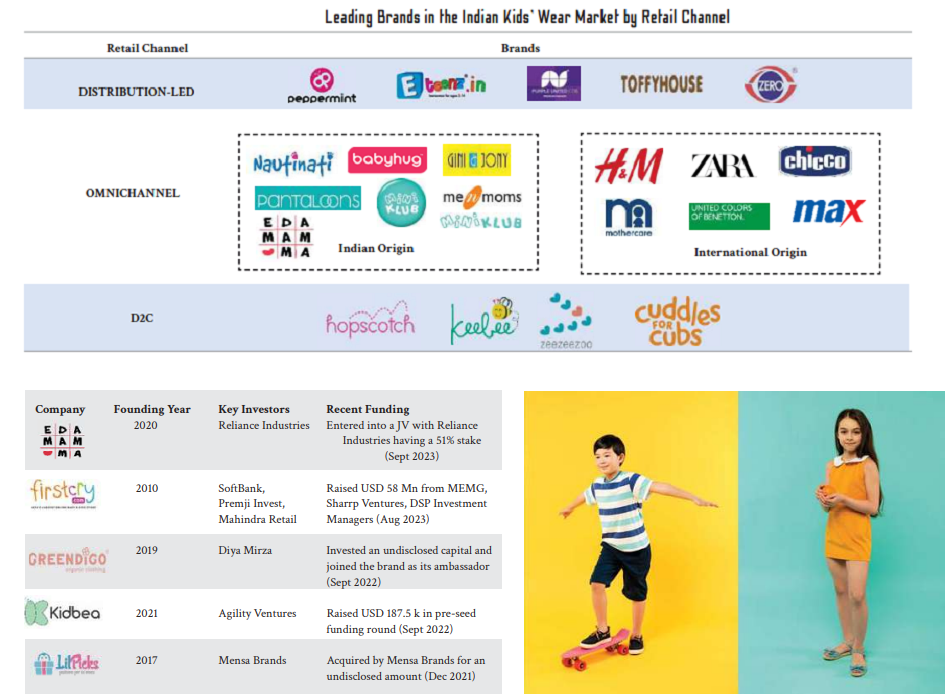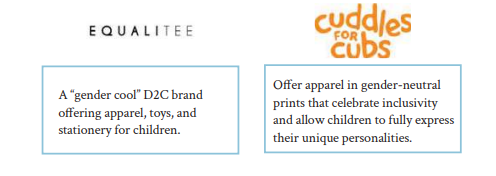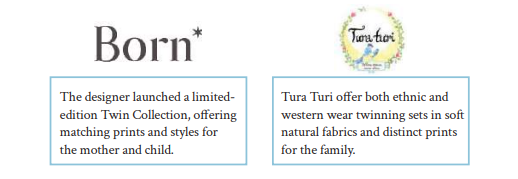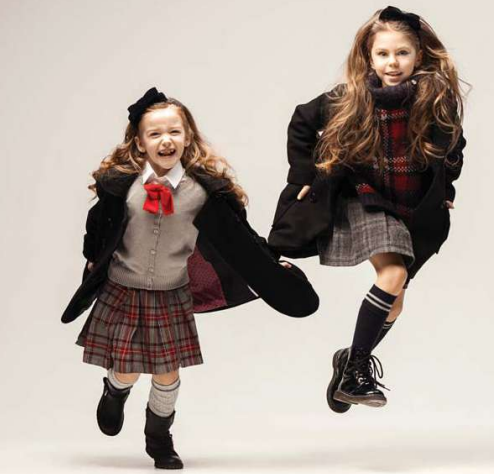The kids’ wear market pertains to the sector that manufactures and markets clothing specifically designed for children, spanning from newborns to pre-teens. This market constitutes a subdivision of the broader apparel and fashion industry and is characterized by items tailored to meet the distinct clothing needs of each specific age group – newborns, infants, toddlers, and kids across segments such as casual wear, active wear, formal wear, and ethnic wear. The increasing influence of fashion trends and rising disposable incomes in India have transformed parents into fashion-conscious consumers. Unlike in the past when children’s clothing was considered primarily functional, contemporary Indian parents are now highly aspirational, seeking to dress their kids in stylish, all-encompassing outfits.
This shift has led to the emergence of numerous domestic and international brands, providing a more stylish and varied selection of clothing options for children. Today, the market is highly competitive, with companies investing in marketing strategies and product innovation to stay ahead of the competition.
Market Size
The Indian apparel industry, significantly affected by the COVID-19 pandemic, has demonstrated an impressive rebound. It is on track to surpass a market size of USD 89 Bn by FY 2025, exhibiting rapid growth at a CAGR of 10.4% between FY 2023 and 2025.
Kids’ wear accounted for USD 15 Bn in FY 2023, making up 21% of the entire apparel market. Projections indicate a robust growth trajectory, with an anticipated faster rate of expansion compared to the overall apparel market at a CAGR of 11% between FY 2023 and 2025. Within kids’ wear, western wear holds a majority share, currently accounting for 88% of the overall market and will continue to hold the same share in FY 2025, growing at 11% CAGR between FY 2023 and FY 2025.
While the unorganized segment currently holds a majority share constituting over 50% of the total market, the organized segment is growing at a faster pace. With a CAGR of 12.6% between FY 2023 and 2025, the contribution of the organized segment in India will touch 46% by FY 2025.
 Competitive Landscape
Competitive Landscape
The kids’ wear market of India comprises diverse types of brands, both domestic and international, following various models of distribution.
• Certain players, such as Eteenz and Zero Babywear, are MBO, LFS, and marketplace-led with limited presence across exclusive brand outlets. As a result, a substantial portion of their sales is attributed to traditional channels such as large format family stores and local kids’ wear shops in neighbourhoods.
• Prominent organized players like Mothercare, Me n Moms, and Gini & Jony adopt a multichannel approach, utilizing both traditional and modern distribution channels such as Large Format Stores (LFS), Exclusive Brand Outlets (EBO), and E-commerce. This diversified presence across modern formats contributes to building awareness and enhancing the aspirational appeal of the brand.
• New-age brands like Hopscotch and Ed-a-Mama follow an online-only model. In the period after the COVID pandemic, this channel has gained significance among consumers and is expected to account for approximately 15% of fashion retail sales in India by FY 2025.
 Growth Drivers
Growth Drivers
• Increase in kids’ population: As India’s overall population surges, the proportion of 0-14-year-olds has reached approximately 26%, generating a substantial demand for products catering to this age group. Additionally, the frequent outgrowth of children from their clothing contributes to a significantly high replacement cycle within the kids’ clothing segment.
• Greater disposable income: The increased financial flexibility of Indian families, along with changing lifestyles, is prompting parents to invest more in their children’s clothing, preferring the latest fashion and branded apparel. This increased willingness to spend on high-quality and stylish clothing for their kids is contributing to the growth of the market.
• Introduction of online retailing: Online shopping provides the convenience of exploring a diverse range of products, comparing prices, and making purchases from the comfort of home, which is particularly appealing to busy millennial parents.
Buying Behaviour
• Gifting vs shopping for self: The buying behaviour of consumers in the kids’ wear market varies based on the purpose of the purchase. Gift-giving traditions, such as birthdays and festivals, significantly contribute to brand sales, attracting price-conscious customers with predeȃ ned budgets. Conversely, when parents shop for their children, the focus shifts to high-quality clothing, with price taking a secondary role in the decision-making process.
• Preferences for sets: Customers favour purchasing coordinated sets for their children as it eliminates the need to spend time matching clothes to complete the look. These sets are not only convenient for parents but also cost-efficient, making them a preferred gifting option in terms of clothing.
• Concept of Social Wardrobing: Modern parents, influenced by celebrity and social media trends, are more conscious about dressing their kids. Within the same income and social circles, they aim to ensure that their kids are on par with their peers. On social media, they focus on avoiding the repetition of outȃ ts to maintain a positive social image.
Key Trends
• Theme-based clothing: Branding and licensing agreements with popular cartoons, movies, and TV shows have become a significant aspect of the kids’ wear market, with parents often opting for products featuring their children’s favourite characters. Additionally, children’s vulnerability to advertising and “pester power” also leads them to influence their parents to purchase these products.
 • Sustainable clothing: The new-age and eco-conscious parents, particularly for children aged 0-2 years, are increasingly opting for natural fibers in kids’ wear due to the sensitivity of children’s skin. They prioritize sustainability and are leaning towards brands that use 100% cotton and linen-based materials and avoid the ones using synthetics and heavy textile chemicals.
• Sustainable clothing: The new-age and eco-conscious parents, particularly for children aged 0-2 years, are increasingly opting for natural fibers in kids’ wear due to the sensitivity of children’s skin. They prioritize sustainability and are leaning towards brands that use 100% cotton and linen-based materials and avoid the ones using synthetics and heavy textile chemicals.
 • Gender-neutral fashion: The increasing focus on gender equality and diversity is driving brands to develop versatile, unisex clothing options that accommodate all children, regardless of their gender identity. Their objective is to move away from traditional distinctions between ‘boy’ and ‘girl,’ encouraging children to express themselves freely without conforming to stereotypical gender norms. Thus these designs primarily prioritize comfort, style, and individual expression.
• Gender-neutral fashion: The increasing focus on gender equality and diversity is driving brands to develop versatile, unisex clothing options that accommodate all children, regardless of their gender identity. Their objective is to move away from traditional distinctions between ‘boy’ and ‘girl,’ encouraging children to express themselves freely without conforming to stereotypical gender norms. Thus these designs primarily prioritize comfort, style, and individual expression.
 • Luxury and designer wear: The increasing influence of the middle class, shifting consumer preferences, and the impact of global fashion trends have led to a heightened demand for high-end and designer children’s clothing in India. This demand is further influenced by celebrity endorsements and social media influencers who frequently showcase their children wearing luxury brands. This exposure contributes to parents aspiring to offer exclusive and fashionable clothing from luxury designer brands to their children.
• Luxury and designer wear: The increasing influence of the middle class, shifting consumer preferences, and the impact of global fashion trends have led to a heightened demand for high-end and designer children’s clothing in India. This demand is further influenced by celebrity endorsements and social media influencers who frequently showcase their children wearing luxury brands. This exposure contributes to parents aspiring to offer exclusive and fashionable clothing from luxury designer brands to their children.
 • Mini-me Outfits: A trend gaining significant popularity is the ‘mini-me’ concept, where parents and children dress alike. Indian retailers have been quick to adopt this trend, providing matching outfits for families. This unique selling proposition appeals to those seeking a special bond through fashion, emphasizing the idea of coordinated and harmonious dressing between parents and kids.
• Mini-me Outfits: A trend gaining significant popularity is the ‘mini-me’ concept, where parents and children dress alike. Indian retailers have been quick to adopt this trend, providing matching outfits for families. This unique selling proposition appeals to those seeking a special bond through fashion, emphasizing the idea of coordinated and harmonious dressing between parents and kids.
 • Attractive product packaging: Premium kids’ wear brands prioritize both apparel design and packaging to create a comprehensive elevated experience for their customers. Visually attractive packaging not only reassures customers about the product’s quality but also imparts a sense of luxury to their children, thereby enhancing the overall perceived value.
• Attractive product packaging: Premium kids’ wear brands prioritize both apparel design and packaging to create a comprehensive elevated experience for their customers. Visually attractive packaging not only reassures customers about the product’s quality but also imparts a sense of luxury to their children, thereby enhancing the overall perceived value. Challenges
Challenges
• Supply chain difficulties: Managing inventory turnover and minimizing waste in the kids’ wear market is challenging due to the higher quantity and diverse sizes of products. This challenge is intensified by the trend toward fast fashion, which demands quick adaptation to changing styles and trends. Thus, both retailers and manufacturers in the kids’ wear sector face the pressure of efficiently handling inventory and staying agile in response to the dynamic market demands.
• Price sensitivity of consumers: Indian consumers, including parents, are price sensitive. Thus, in the kids’ wear market, where children tend to outgrow clothing rapidly, parents may prioritize cost-effectiveness over brand loyalty.
• Stringent quality concerns: In the highly competitive kids’ wear market, maintaining high-quality standards is essential for building and retaining brand trust since parents are likely to be loyal to brands that consistently deliver durable, safe, and comfortable clothing for children.
Future Outlook
As parents continue gaining financial flexibility, their willingness to invest in high-quality and stylish clothing for their children will rise, thereby strongly contributing to the market’s growth. While the arena might seem competitive, brands that continue to innovate their product offerings according to the ever-changing consumer preferences while piquing their interest with creative marketing strategies are likely to succeed.




